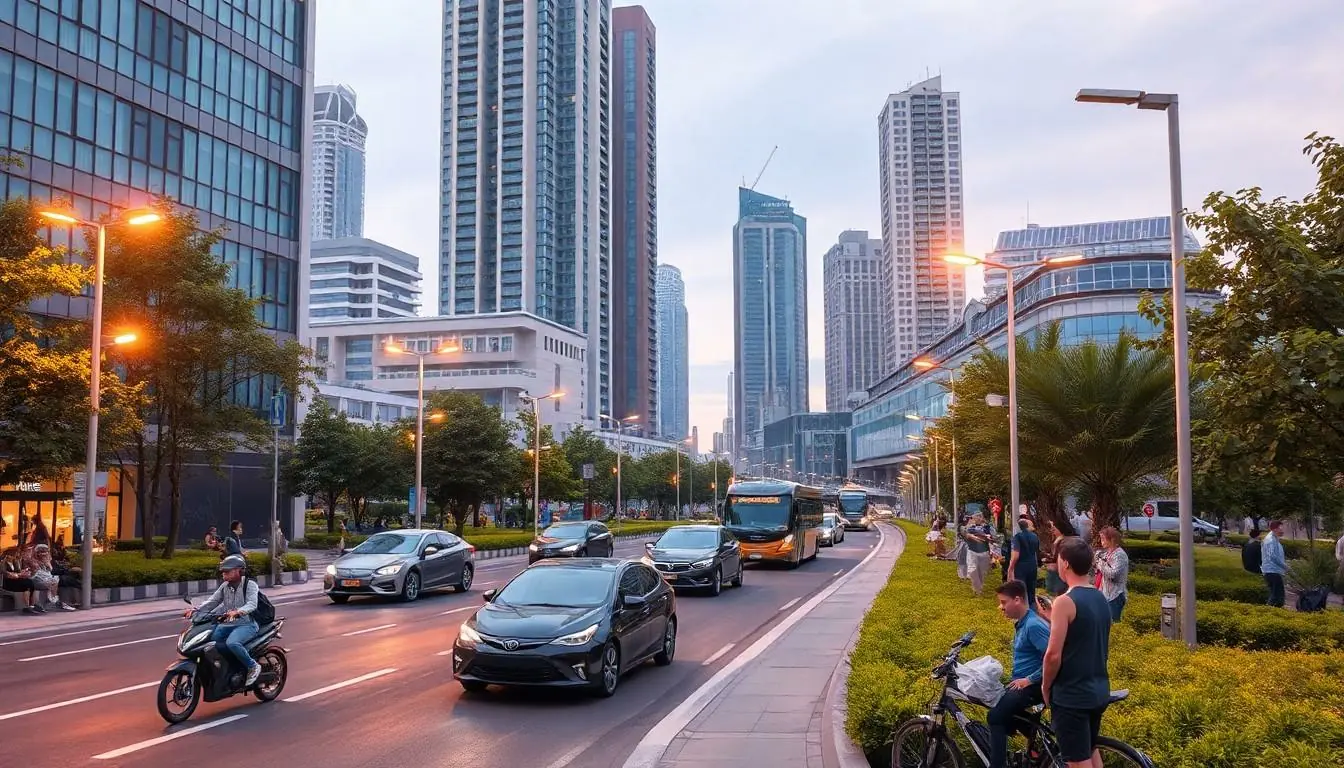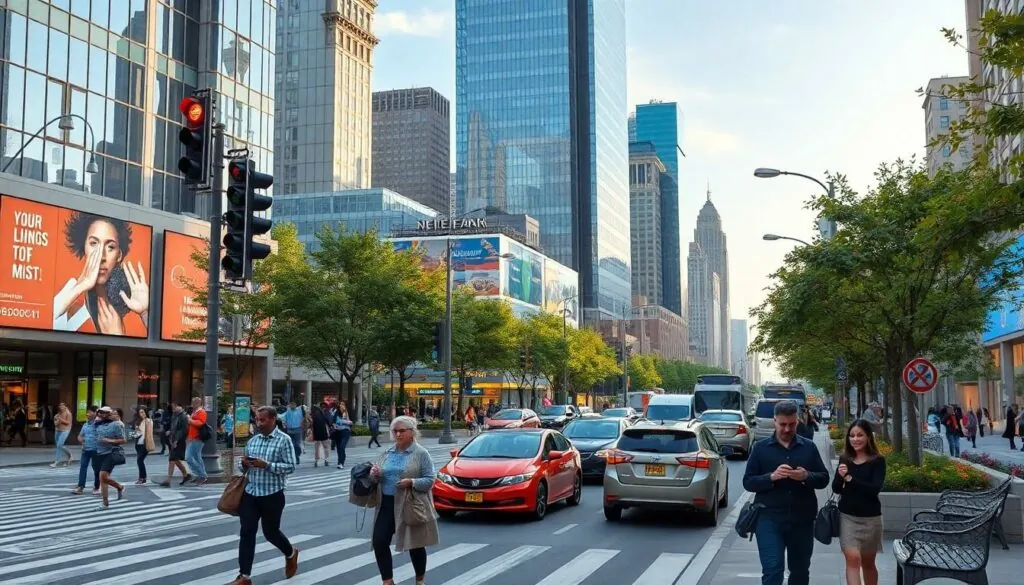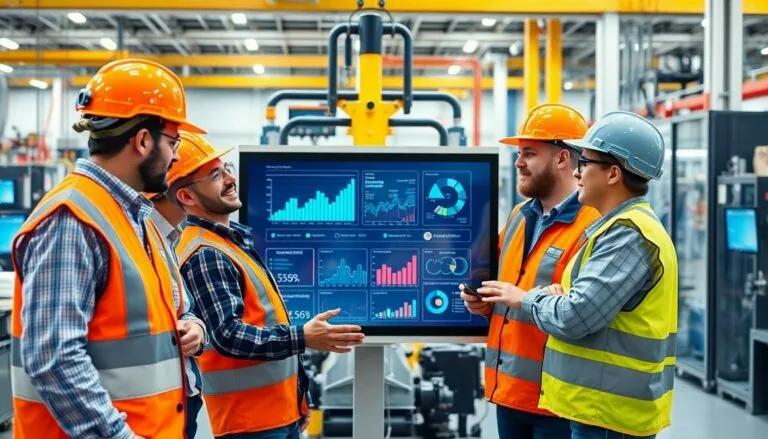Table of Contents
ToggleImagine a city where traffic jams are as rare as unicorns and streetlights know when to turn on without a single flick of a switch. Welcome to the world of IoT smart cities, where technology and urban living collide in the most delightful way. With sensors whispering secrets to each other and data flowing like a well-oiled machine, these cities are transforming the way people live, work, and play.
Overview of IoT Smart Cities
IoT smart cities integrate technology and urban infrastructure to enhance the quality of life for residents. These cities leverage interconnected systems to streamline services and improve efficiency.
Definition and Concept
An IoT smart city uses sensors and data analytics to manage urban services. Connectivity empowers its infrastructure, ranging from traffic management to waste collection. The concept focuses on creating environments that respond intelligently to residents’ needs. Smart public services, such as real-time public transport updates, become essential features. Ultimately, the goal revolves around increasing sustainability and enhancing citizen engagement.
Key Components
Key components of IoT smart cities include intelligent transportation systems, smart grids, and advanced telecommunications networks. Intelligent transportation systems employ real-time data to reduce congestion and improve safety. Smart grids enhance energy distribution efficiency, providing residents with reliable power. Moreover, advanced telecommunications networks ensure seamless connectivity across all services. Data analytics underpin the decision-making process, enabling cities to adapt and innovate continually. Each component plays a crucial role in shaping the urban landscape, ultimately improving everyday life.
Benefits of IoT Smart Cities

IoT smart cities offer numerous advantages that reshape urban living. These benefits significantly enhance residents’ experiences and streamline city operations.
Enhanced Efficiency
Efficient management of city resources stems from IoT technology. Intelligent transportation systems optimize traffic flow by utilizing real-time data. An example includes adaptive traffic signals that adjust to the number of vehicles, reducing congestion. Energy consumption decreases with smart grids, which distribute electricity based on demand. Predictive maintenance of public infrastructure prevents costly repairs by monitoring conditions continuously. Resource allocation improves, ensuring services are deployed where they are most needed. Overall, enhanced efficiency translates into lower operational costs for city governments.
Improved Quality of Life
Quality of life for residents elevates in an IoT smart city. Enhanced public safety results from connected surveillance systems that monitor community areas. Access to real-time information on public transportation allows citizens to plan their journeys effectively. Environmental sensors contribute to monitoring air quality, alerting residents to potential health risks. Community engagement grows through interactive applications that keep residents informed and involved. Citizens enjoy more green spaces due to optimized urban planning, contributing to overall well-being. In essence, IoT smart cities create healthier, more connected, and vibrant living environments.
Challenges Facing IoT Smart Cities
IoT smart cities face several challenges that impact their development and success. Addressing these obstacles is crucial for maximizing the benefits of interconnected urban environments.
Security Concerns
Security concerns pose a significant threat to IoT smart cities. Cyberattacks can compromise sensitive data, leading to breaches that may endanger residents’ privacy. Malicious actors target interconnected sensors and devices, seeking vulnerabilities in the system. Protecting critical infrastructure, public safety systems, and personal information requires robust cybersecurity measures. Implementing encryption, regular software updates, and comprehensive security protocols can help mitigate risks. Engaging with stakeholders to enhance awareness about potential threats is vital for fostering a secure urban ecosystem.
Infrastructure Limitations
Infrastructure limitations hinder the full potential of IoT smart cities. Aging systems often lack compatibility with new technologies, making integration challenging. Upgrading existing infrastructure requires significant investment, and municipalities may struggle to allocate the necessary resources. Limited internet connectivity in certain areas creates barriers to implementing smart solutions. Building a reliable, high-speed communications network is essential for facilitating real-time data exchange and supporting smart applications. Collaborating with technology providers and government agencies can help overcome infrastructure challenges, enabling cities to thrive in the digital age.
Case Studies of Successful IoT Smart Cities
Cities around the world are adopting IoT technologies to create smarter urban environments. These case studies showcase innovative implementations that enhance urban living.
Example City 1
Barcelona exemplifies the transformation that IoT technology offers. Through smart streetlights, the city saves energy while adjusting brightness based on pedestrian activity. Monitoring air quality through extensive sensor networks contributes to better health for residents. Furthermore, a smart waste management system uses sensors to optimize collection routes, reducing operational costs by 20%. The integration of mobile applications allows residents to access real-time data on public transport and parking availability, which significantly improves daily commuting.
Example City 2
Singapore stands out with its comprehensive Smart Nation initiative. The city employs sensors throughout its transportation network, enabling efficient traffic management and reducing congestion by up to 15%. Smart traffic lights adapt to real-time traffic conditions, enhancing flow across major intersections. Additionally, advanced data analytics support proactive urban planning by analyzing population trends and resource consumption. The availability of a digital platform encourages community engagement, allowing residents to report issues and offer suggestions. These features illustrate Singapore’s commitment to leveraging IoT for sustainable urban development.
Future Trends in IoT Smart Cities
Emerging trends in IoT smart cities reflect a commitment to improving urban life through innovation and collaboration. Exciting technological advancements continue to drive the development of intelligent urban environments.
Technological Advancements
Innovations in IoT technology enhance connectivity within smart cities. Artificial intelligence streamlines data analysis, allowing for more informed decision-making and resource management. Smart sensors monitor various parameters such as traffic flow, energy usage, and environmental conditions. These devices provide real-time insights that foster efficient city management. Additionally, 5G networks support faster data transmission, enabling seamless communication between devices. Connectivity improvement ensures a more responsive urban infrastructure. Implementing machine learning algorithms further optimizes city operations, predicting maintenance needs before issues arise.
Policy and Governance Changes
Governance structures are shifting to accommodate the demands of IoT smart cities. Innovative policies prioritize data privacy and security, addressing concerns surrounding resident information and cyber threats. Collaboration among government agencies, private sector partners, and community stakeholders drives effective governance frameworks. Regulatory frameworks are evolving to support the deployment of smart technologies while ensuring ethical practices. Additionally, cities are adopting open data initiatives, promoting transparency and citizen participation in urban planning. These changes empower residents to engage with decision-making processes. Adapting to these trends positions cities to harness the full potential of IoT solutions for future growth.
The evolution of IoT smart cities represents a significant leap towards enhancing urban living. By integrating advanced technologies into city infrastructure, these environments not only improve efficiency but also foster a higher quality of life for residents.
As cities embrace intelligent systems for transportation, energy management, and public safety, they pave the way for sustainable development and community engagement. However, addressing challenges like cybersecurity and outdated infrastructure remains critical for unlocking the full potential of these innovations.
With continued investment in technology and collaborative governance, the future of urban living looks promising, offering a glimpse into a more connected and responsive world.







